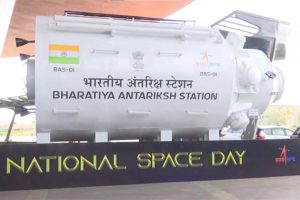The Indian Space Research Organisation (ISRO) announced that the Ocean Colour Monitor (OCM) sensor onboard its EOS-06 satellite has successfully captured global phytoplankton concentrations. The satellite’s data provides a detailed, global-scale view of chlorophyll-a (Chl-a) concentrations every two days.
In a post on X, ISRO shared, “The OCM sensor in EOS-06 captures phytoplankton concentration on a global scale. The data, with a 1 km resolution, is generated for the period of Jan-Dec 2024, providing critical information about the bio-geochemical variability of oceans on a global scale.”
EOS-06, also known as Oceansat-3, is the third satellite in India’s Oceansat series, designed to enhance the capabilities of its predecessor, Oceansat-2. It carries multiple advanced instruments to aid in oceanographic research and environmental monitoring.
One of the key payloads on EOS-06 is the Ocean Colour Monitor (OCM-3), which measures ocean color and chlorophyll levels. Other important instruments on the satellite include the Sea Surface Temperature Monitor (SSTM), Ku-Band Scatterometer (SCAT-3), and ARGOS, a data collection system for environmental monitoring.
According to a previous ISRO statement, EOS-06 is focused on observing ocean color, sea surface temperature, and wind vector data for oceanographic, climate, and meteorological studies. It also supports value-added products, such as potential fishing zone identification, by using chlorophyll, sea surface temperature (SST), and wind speed data.
The mission ensures continuous collection of ocean color and wind vector data, aiding in marine ecosystem monitoring and climate change studies. EOS-06 also brings enhancements with additional datasets, such as improved sea surface temperature data and extra optical and infrared bands for fluorescence and atmospheric corrections, which will support more accurate oceanographic studies.
In addition to ocean monitoring, EOS-06 aims to improve forecasting and scientific research related to climate, fisheries, and weather patterns. The satellite’s ability to refine algorithms and develop better data products will help enhance both scientific understanding and real-world applications.
Launched aboard the PSLV-C54 rocket from ISRO’s U R Rao Satellite Centre (URSC), EOS-06 weighs 1,117 kg and plays a crucial role in studying the world’s oceans. Its data will help scientists gain deeper insights into climate change, marine ecosystems, and weather patterns, contributing to critical environmental research and monitoring.





